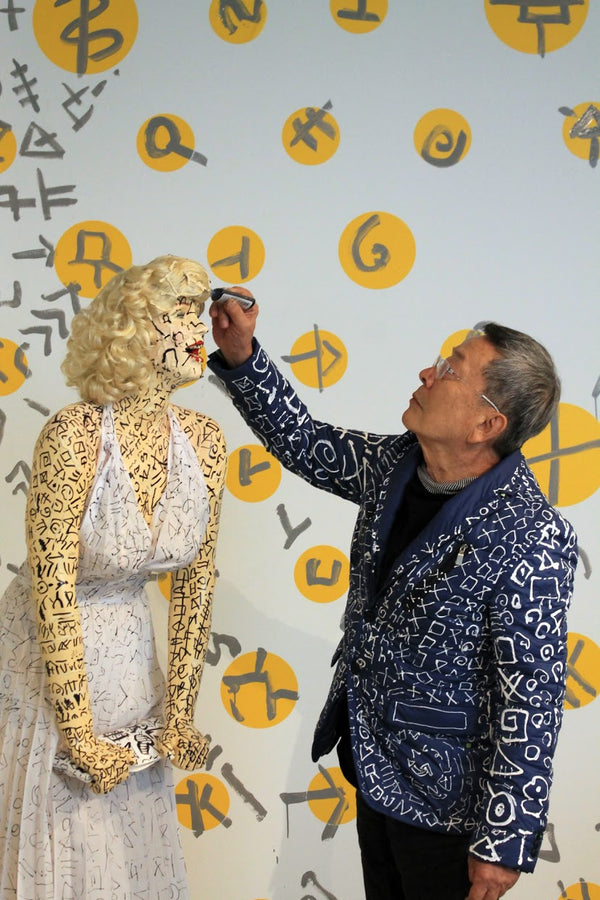COLLECTIONS
The Museum of Modern Art (New York), The Guggenheim Museum(New York), The National Museum of Art (Osaka, Japan), Hyogo Prefectural Museum of Art (Hyogo, Japan), etc.



In 1959, Shuji Mukai met Jiro Yoshihara, founder of the Gutai Art Association. Yoshihara highly appreciated Mukai's talent, and he became the group's youngest member in 1961. Mukai's work is characterised by the inventive use of various symbols that he has created, which fill both canvases and spaces. At times, he even utilises his own body as a canvas. Yoshihara praised his works, saying, "While they appear cool at first glance, there is a furious energy lurking within them."
In 1964, the Museum of Modern Art New York (MoMA) presented Mukai's works as part of the New Japanese Painting and Sculpture exhibition, which toured the United States until 1967. The curator William S. Lieberman bought one of Mukai's works to add to the MoMA's collection. In 1966, Mukai presented his first installation work in Osaka, filling the entire interior surface of a jazz cafe called 'Check’ with his inventive symbols.
For the Solomon R. Guggenheim Museum's 2013 Gutai retrospective titled Gutai: Splendid Playground, Mukai recreated his renowned Symbol Room from the 8th Gutai Art Exhibition and covered every surface of the museum's elevator and restroom with millions of symbols. In 2017, Mukai contributed installation works to the renovation of Louis Vuitton's SOHO boutique in New York City (curated by architect Peter Marino). In addition, he has received high acclaim invarious fields.
COLLECTIONS
The Museum of Modern Art (New York), The Guggenheim Museum(New York), The National Museum of Art (Osaka, Japan), Hyogo Prefectural Museum of Art (Hyogo, Japan), etc.
Get exclusive access to the newest exhibition information and member-only events available only to newsletter subscribers.
After submitting your email address, you will receive a confirmation email. Please click on the link in the email to complete your registration.